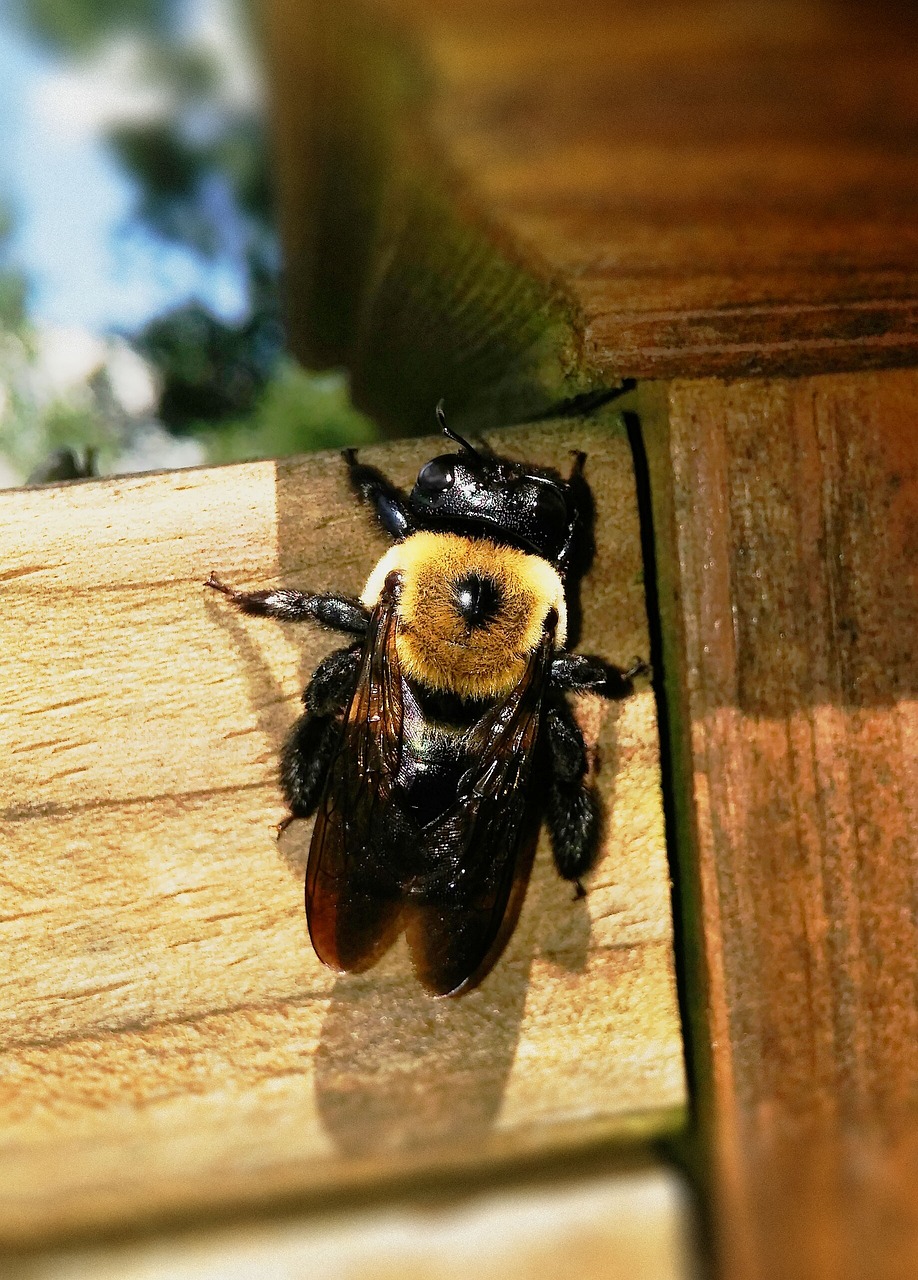
Protecting Your Wood Siding Against Carpenter Bee Damage
Wood siding is a classic and timeless choice for homes because of its natural beauty and ability to add warmth to any architectural style. However, an unexpected foe can wreak havoc on the integrity of your wooden exterior – carpenter bees. These seemingly harmless creatures may appear harmless, but they can drill perfectly round holes into your siding. If you’re a homeowner who cherishes the aesthetics and durability of wood siding, it’s essential to understand how you can take proactive measures to protect your wood siding. In this article, we will provide practical tips on how to do that.
What Are Carpenter Bees?
Carpenter bees are a diverse group of species that share a striking resemblance to bumble bees. In most cases, carpenter bees are as big as bumble bees or even bigger. Their shiny black abdomens are the major feature that helps distinguish the carpenter bees.
The other differentiating factor is attributed to how these bees earned their names. Carpenter bees earned their name from the perfectly round holes they meticulously drill into wood.
These solitary insects are quite diligent at forging their own path. After drilling holes of their choice, they reside in the tunnels they excavate. This is where they also seek refuge during colder months.
Although not aggressive, male carpenter bees may swoop down on perceived threats. On the other hand, the females lack stingers, but they possess a sting they use when provoked.
Identifying Signs of Carpenter Bee Infestation
Recognizing signs of a potential carpenter bee infestation is crucial for protecting your wood siding. Here are some things to take note of:
- Look for deep, nickel-sized holes meticulously drilled into the wood. The holes are often accompanied by wood shavings or sawdust scattered nearby.
- Look out for yellowish-brown stains. This indicates carpenter bee poop.
- Listen attentively; you might catch faint chewing sounds from within the wood.
- A telltale sign is the presence of male carpenter bees hovering around the nesting hole while their female counterparts diligently work inside.
Organic and Chemical Control Methods
Bee hotel
One effective and eco-friendly method to deter carpenter bees from damaging your wood siding is by installing a “Bee hotel.” These hotels are thoughtfully crafted with removable bamboo, paper, or wood tubes within a small frame.
Though they’re primarily designed for garden-friendly pollinators like mason bees, these hotels can be an attractive alternative nesting site for female carpenter bees.
Consider investing in a well-designed Bee hotel with a durable poly frame and charred pine burrows. This environmentally conscious approach offers a safe haven for beneficial pollinators while redirecting carpenter bees away from your precious wood siding.
Dress exposed woods
Another effective method for driving carpenter bees away is by “dressing exposed woods.” Before you paint, thoroughly protect the entire wood surface by applying a primer followed by two coats of exterior paint. This is because while stains and varnishes provide some level of defense, paint is less potent than they are.
Additionally, seal all cracks, nail holes, and splinters using caulk, putty, or wood filler to eliminate potential nesting points. By doing all of these, you are creating an inhospitable environment for carpenter bees.
Citrus oil
An effective organic solution to deter carpenter bees from your wood siding is using “Citrus oil.” Insects hate citrus oil; fortunately, you can easily prepare citrus oil at home. Simply cut up various citrus fruit peels, place them in a pan, and cover with water. Boil the mixture, simmer for 10 minutes, and then let it cool.
Now find a way to transfer the infused water to a spray bottle, and you’re done. You can proceed to apply the spray generously to the nests. Reapply the oil as much as necessary until the females relocate.
Afterward, repair and paint the wood for added protection. Alternatively, you can purchase citrus oil sprays online, such as a high-quality orange oil product on Amazon. Make sure that whatever citrus oil you buy contains 80 to 95 percent D-limonene.
Insecticide spray
Another approach for combating carpenter bees and shielding your wood siding is using an insecticide spray. These targeted sprays are specifically designed to eradicate invading insects while preserving the integrity of your wooden exterior.
Select an insecticide labeled for carpenter bees, and carefully follow the instructions. You can spray directly into the nests’ openings to eliminate pests. Note, however, that it is essential to exercise caution and use protective gear when handling insecticides.
Hang a decoy wasp net
One smart organic method for keeping carpenter bees from nesting in your wood siding is to hang a decoy wasp nest. Carpenter bees tend to steer clear of areas occupied by wasps.
To create the decoy, stuff a brown paper bag with lightweight materials like moss, paper, or plastic bags to mimic the shape and size of a wasp nest. When done, secure the open end with a string and hang it in the desired protective area.
While this approach effectively discourages new nests, it may not repel insects from existing nests nearby. Adopt this eco-friendly tactic to keep your wood-siding carpenter bee-free.
Conclusion
Safeguarding your wood siding from the relentless threat of carpenter bees is essential to preserve its natural beauty and durability. So ensure to do what you can to protect your wood siding.
For premium, reliable wood siding products that stand the test of time and enhance the charm of your property, look no further than LonghouseCedar. We simply offer the best.
